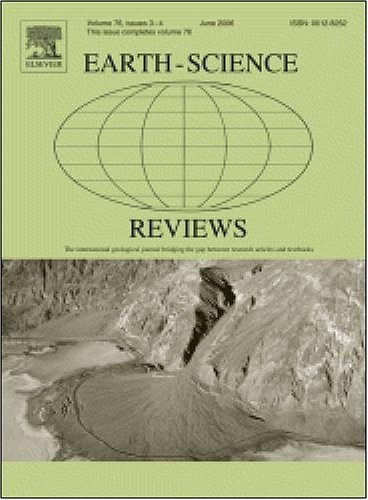Classic, modern, and physics-based rheological laws for geophysical granular flows in a landslide hazard chain
IF 10
1区 地球科学
Q1 GEOSCIENCES, MULTIDISCIPLINARY
引用次数: 0
Abstract
Geophysical granular and particle-laden flows, in a typical landslide hazard chain, pose significant risks to human life and infrastructure. The governing rheological constitutive law of the flowing mixture plays a crucial role in assessing their mobility and consequences. Developing a generic constitutive law, capable of capturing the evolving nature of mixture properties across different flow regimes in a landslide hazard chain, requires the incorporation of several physical concepts and is an active research question. This technical review presents a comprehensive review of existing rheological laws by classifying them into classic, modern, and physics-based mixture laws. Firstly, a preliminary classification of particle-fluid mixtures is proposed, encompassing dilute, moderate, and high ranges of solid concentrations. Next, following the continuum mechanics, the various types of particle-fluid mixture representations, from single-phase to multi-phase conceptualizations are presented. With a focus on flow index classification, the classic laws that assume a fixed relation over a single flow regime are explored. By switching to different flow regimes, rather than flow indexes, the modern laws that aim to capture the rheological behavior of flowing mixtures across different flow regimes are reviewed. Finally, the physics-based mixture rheological laws which combine the existing classic and modern rheological laws for fluid and solid phases, and further include additional novel rheological laws for interphase interaction forces, are reviewed. This review enlightens the existing research trends on classic and modern rheological laws, describes their capabilities, and highlights missed concepts that are required for the development of a generic rheological law for landslide hazard chains. Enhanced understanding of the evolution of rheological behavior of flowing mixtures over various flow regimes in a landslide hazard chain improves further studies on hazard simulation and prediction, risk mitigation, and land use planning.
滑坡灾害链中地球物理粒状流的经典、现代和基于物理的流变规律
在典型的滑坡灾害链中,地球物理颗粒流和颗粒流对人类生命和基础设施构成重大威胁。流动混合物的控制流变本构律在评估其流动性和后果方面起着至关重要的作用。开发一个通用的本构律,能够捕捉在滑坡危险链中不同流动状态下混合物特性的演变性质,需要结合几个物理概念,这是一个积极的研究问题。这篇技术评论通过将现有的流变定律分为经典、现代和基于物理的混合定律,对它们进行了全面的回顾。首先,提出了颗粒-流体混合物的初步分类,包括稀、中、高固体浓度范围。接下来,根据连续介质力学,介绍了从单相到多相的各种类型的颗粒-流体混合物的概念。重点讨论了流动指标的分类,探讨了在单一流型上假设固定关系的经典规律。通过切换到不同的流动形式,而不是流动指数,旨在捕捉流动混合物在不同流动形式的流变行为的现代法律进行了审查。最后,综述了基于物理的混合流变定律,该定律结合了现有的经典和现代流固相流变定律,并进一步包括了相间相互作用力的新流变定律。本文综述了经典和现代流变规律的现有研究趋势,描述了它们的能力,并强调了开发滑坡危险链通用流变规律所需的缺失概念。加深对滑坡灾害链中不同流态流动混合物流变行为演变的理解,有助于对灾害模拟和预测、风险缓解和土地利用规划的进一步研究。
本文章由计算机程序翻译,如有差异,请以英文原文为准。
求助全文
约1分钟内获得全文
求助全文
来源期刊

Earth-Science Reviews
地学-地球科学综合
CiteScore
21.70
自引率
5.80%
发文量
294
审稿时长
15.1 weeks
期刊介绍:
Covering a much wider field than the usual specialist journals, Earth Science Reviews publishes review articles dealing with all aspects of Earth Sciences, and is an important vehicle for allowing readers to see their particular interest related to the Earth Sciences as a whole.
 求助内容:
求助内容: 应助结果提醒方式:
应助结果提醒方式:


